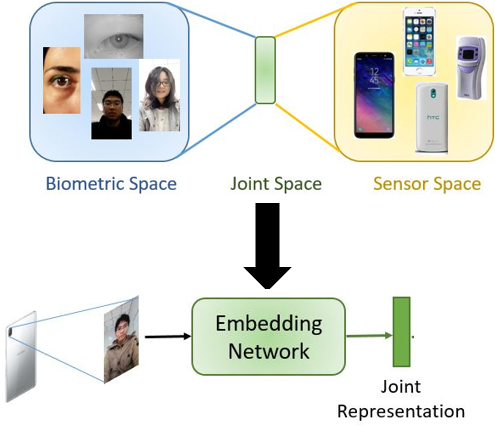One-Shot Representational Learning for Joint Biometric and Device Authentication

Device authentication coupled with biometric verification has become one of the most secure and fastest ways of two-factor authentication on smart devices. Smartphones typically acquire a biometric image such as the face, fingerprint, or iris using a dedicated sensor located on the device and verify the user to grant access to remote applications. MAC addresses can be used for the task of validating the device but are prone to MAC flooding and ARP spoofing attacks. Biometric and device recognition can be conducted separately but is limited by the weakest performing module. Also, specialized routines are needed for different biometric modalities.
We propose to learn the biometric and device identity using a joint representation for performing combined biometric and device authentication. We invoke the sensor representation considered to be unique for each sensor for device validation. We employ an embedding network that accepts a single biometric image as input and jointly learns the features from both biometric and sensor space in a one-shot learning schema. The proposed end-to-end learning generalizes across three different biometric modalities (face, iris, and periocular). The joint representation is implicitly privacy-preserving as the biometric representation cannot be trivially decoupled from the joint embedding, and outperforms stand-alone recognition modules by a significant margin in terms of joint identification and joint verification.
Further project details can be viewed here.
Publications
S. Banerjee and A. Ross, “One-Shot Representational Learning for Joint Biometric and Device Authentication”, Proc. of 25th International Conference on Pattern Recognition (ICPR 2020), (Milan, Italy), January 2021.
